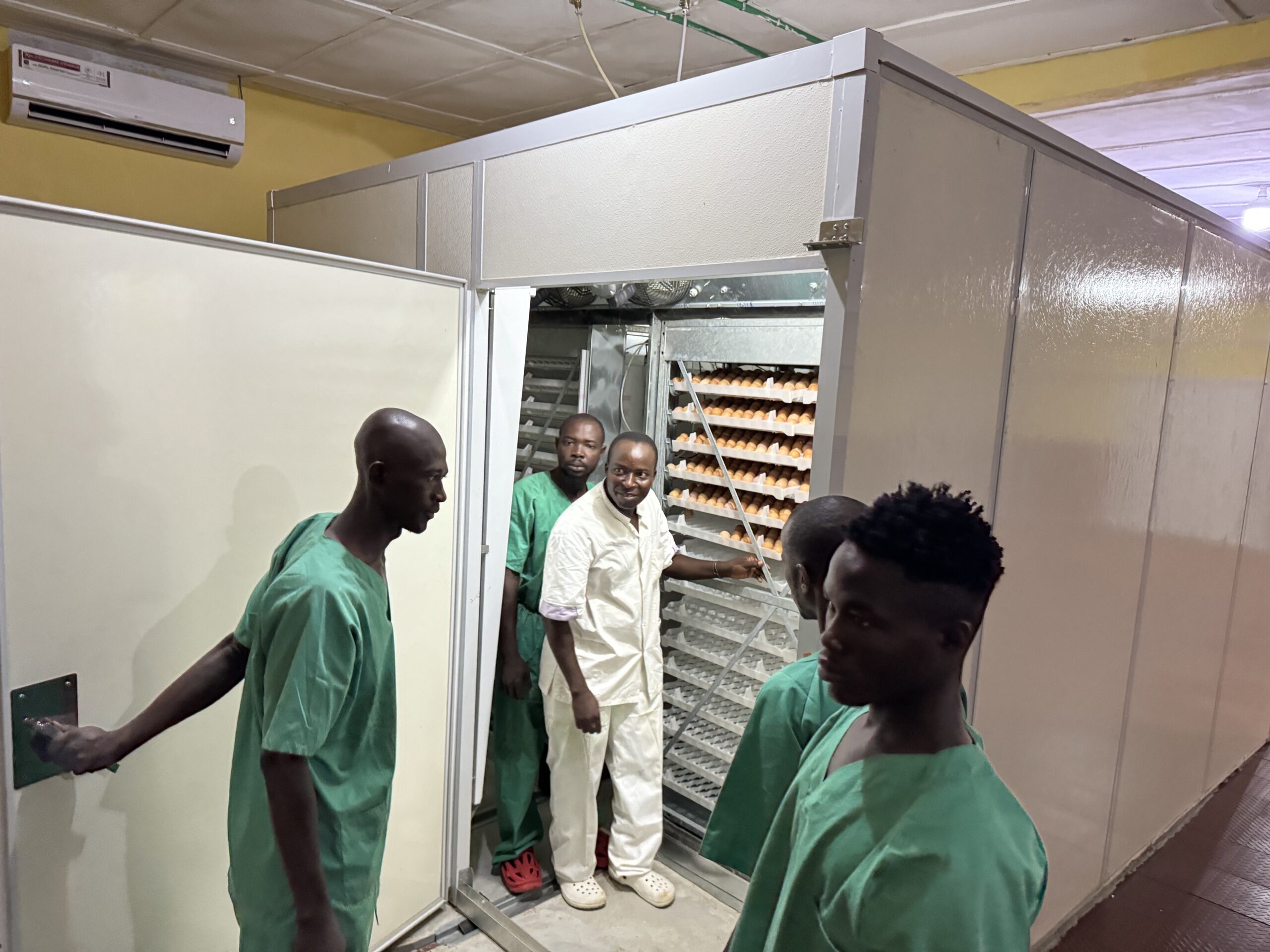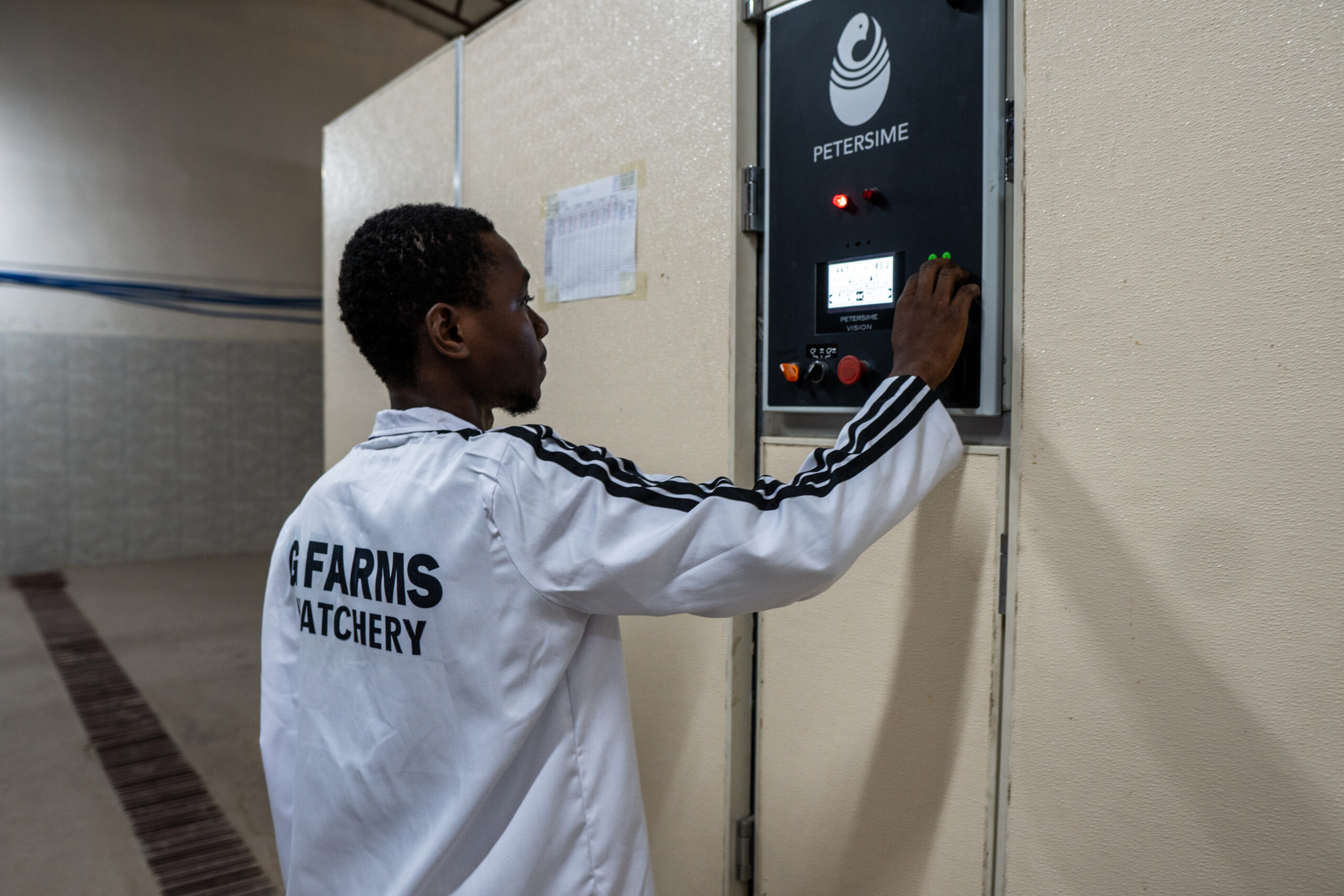By: Jan de Jonge and Joe Antonyo
One of the most powerful aspects of the African Poultry Multiplication Initiative (APMI) is its ability to adapt to the unique needs of each country while maintaining its overall value-chain and structure. The implementation of the APMI program in Sierra Leone and The Gambia has been notably different due to the absence of operational hatcheries in these countries. Hatcheries play a crucial role in ensuring the success of the APMI program and the profitability of the value-chain actors. When we first began the APMI programs Sierra Leone and The Gambia, we recognized that establishing hatcheries would be essential for the program’s success.

Why is a hatchery so important to the APMI Program?
Previously, neither Sierra Leone nor The Gambia had functional hatcheries, which necessitated relying on day-old chick imports from other countries—a solution that proved unreliable and unsustainable due limited flight connectivity. Although our partners imported some live day-old chicks (DOCs) to seed the market and train staff, they never intended this as a long-term solution. Here’s why building hatcheries was crucial:
- Supply: Importation from outside the country results in irregular supply of DOCs. Building local hatcheries ensures a steady supply of day-old chicks, meeting demand without relying on external sources.
- Cost: The cost of importing DOCs is prohibitive making the initial investment in DOCs too expensive for Brooder Units (BUs) and impacting the profitability of the value-chain at each level.
- Mortality: Transporting live animals poses significant challenges, particularly for day-old chicks (DOCs), which are especially vulnerable to temperature fluctuations and inadequate ventilation. These risks often lead to high mortality rates, adversely affecting both the supply and cost of this method.
- Vertical Integration: One of the key principles of APMI is “vertical integration,” which empowers partners to control the vaccination process. The hatcheries play a crucial role in this step by ensuring proper vaccination of DOCs at the hatchery, which is vital for their health and productivity.
Building a Hatchery: Step-by-Step
Building a hatchery is a complex process that demands meticulous planning and execution. Here’s a detailed overview of the steps involved in the construction projects in Sierra Leone and The Gambia:
1. Planning and Design:

This phase involved:
- Defining the hatchery’s capacity for the different phases of the program (future sustainability)
- When selecting a compliant location, we consider the following factors:
- Access to water and electricity: Ensure reliable sources are available.
- Expansion possibilities: Verify that there is enough space and that permits for future growth are obtainable.
- Security: Protect against theft with adequate measures.
- Surroundings: Maintain a positive relationship with neighbors and the local population, as odors from improperly managed waste can cause conflicts.
- Biosecurity: Avoid proximity to other poultry or animals to minimize the risk of disease transmission.
- Access to roads: Ensure the site is well-connected for the supply of fertile eggs and the delivery of chicks from the hatchery.
- Geographical location:
- Choose a site near parent stock farms.
- Locate close to the largest day-old chick markets.
- Ensure roads are accessible for distribution throughout the country.
- Select an area that is not prone to natural disasters like flooding.
- Designing the layout (including ventilation and sanitation systems) and
- Selecting machinery.
WPF collaborated closely with external engineers and our private-sector partners to ensure proper design and secure necessary approvals in-country.
We also provided opportunities for our partners to learn from existing hatcheries. Our partners visited Nigeria to gain insights into the complexities of establishing and operating a hatchery. This trip proved crucial and led to specific changes in the planning phase for the hatcheries. For instance, in Sierra Leone, Leecon initially planned to build their hatchery near Freetown, the capital. However, after visiting Nigeria, they realized that the conditions in Makeni District were better suited for the project. Consequently, they purchased land in Makeni District. Now that the hatchery is operational, Leecon’s leadership acknowledges that the trip to Nigeria and the subsequent change in the hatchery’s location have been vital to their success.
2. Site Preparation and Construction:

This phase involved:
- Preparing the building site and foundation
- Constructing the physical structure
- Installing climate control systems
- Implementing sanitation and waste management solutions in partnership with local governments
- Establishing a parent stock
Once we finalized the plans, we focused on the physical construction of the hatcheries. Due to inconsistent power supply in many of the APMI countries we operate in, we develop backup power plans, such as purchasing generators, to ensure a reliable 24/7 electricity supply to the hatcheries. Other key considerations during this process include ensuring reliable waterlines, drainage systems, tiling, ceiling installation, and compressed air pipes. These elements were crucial to designing hatcheries that meet the unique needs and conditions of each country.
During this stage, our partners constructed parent stock houses, adhering to good poultry standards. Even before the hatcheries were completed, the first parent stock was placed on the ground to ensure they would start producing fertile eggs as soon as the hatcheries became operational.
3. Equipment Installation and Setup:

This phase involved;
- Installing incubators, hatchers, and other equipment.
- Set up of climate control and monitoring systems,
- Set up egg handling and processing equipment.
- Building specialized storage facilities to maintain optimal egg temperature (16-18°C) for embryo viability.
- Development of vaccine schedules and purchasing vaccine equipment.
The Qatar Fund for Development (QFFD) funded the hatchery equipment, which we sourced from leading industry suppliers. The World Poultry Foundation (WPF) provided essential technical expertise for equipment purchasing, importation, installation, and training on the new machinery.
Additionally, we needed to develop and import unique vaccine schedules for the parent stock and day-old chicks (DOCs). WPF closely collaborated with our private-sector partners to advise on vaccine procurement, evaluating each option based on price, availability, and support to choose the best solution. Maintaining the cold chain for vaccines is critical, and ensuring quality standards required a vaccine fridge and backup generator for proper storage in the hatchery.
4. Staff Training and Hiring:
Finding experienced hatchery staff locally was challenging since neither country had operational hatcheries, and this work is technical. WPF supported its partners with recruiting experienced hatchery managers from abroad and then providing ongoing training workshops to equip local employees for future independent hatchery management. We also worked to design a data collection application that works within on our existing data systems so allow the WPF team to see and view data from each hatchery to help with management even from afar. We will share more about this tool in our next blog in this series.

5. Testing and Commissioning:
Before operations began, we conducted and repeated equipment and system testing with hatchery managers to ensure everything functioned perfectly. We then put trial runs in place to simulate hatchery operations and identify any flaws or challenges.
Delivering on benefits from our hatcheries
After overcoming the challenges of construction and local developers working through technical drawings, the new hatcheries will significantly impact Sierra Leone and The Gambia’s poultry industries.
- Quality Chicks: Farmers will have access to a dependable supply of healthy, vaccinated dual-purpose chicks.
- Improved Logistics: We work to eliminate logistical challenges and chick quality issues associated with imports.
- Price Stability: While price fluctuations always pose risks, in-house breeding and hatcheries help shield our partners from drastic price and currency fluctuations, ultimately supporting market consistency.
Building a Local Sustainable Future
As always, funding for this work is a collaborative effort, with significant co-investment from our private-sector partners forming the cornerstone of our efforts. Our partners covered the costs of building materials and manual labor. With financial support from the QFFD, the WPF provided technical guidance, construction recommendations, and compliance inspections for regulatory bodies throughout the construction process. Additionally, QFFD’s funding was crucial in purchasing essential equipment for the hatcheries, including incubators, generators, and vaccine equipment.
The hatcheries are not only buildings; they represent a commitment to a more secure and sustainable agricultural future for Sierra Leone and The Gambia. With access to reliable, high-quality chicks, farmers will be empowered to improve their livelihoods and contribute to the overall growth of the poultry sector in both countries. WPF is committed to seeing this journey through.
The APMI Program is being implemented in The Gambia and Sierra Leone with generous funding from the Qatar Fund for Development (QFFD).
CATEGORY
LOCATION